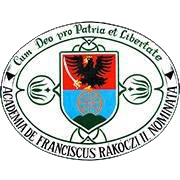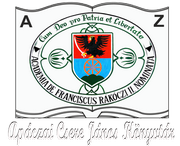Please use this identifier to cite or link to this item:
https://dspace.kmf.uz.ua/jspui/handle/123456789/5463Full metadata record
| DC Field | Value | Language |
|---|---|---|
| dc.contributor.author | Baran Adalbert | en |
| dc.contributor.author | Барань Адальберт | uk |
| dc.contributor.author | Bárány Béla | hu |
| dc.contributor.author | Huszti Ilona | hu |
| dc.contributor.author | Густі Ілона | uk |
| dc.contributor.author | Fábián Márta | hu |
| dc.contributor.author | Фабіян Марта | uk |
| dc.date.accessioned | 2025-10-25T18:30:31Z | - |
| dc.date.available | 2025-10-25T18:30:31Z | - |
| dc.date.issued | 2025-09-17 | - |
| dc.identifier.citation | In Вісник науки та освіти. (Серія «Філологія», Серія «Педагогіка», Серія «Соціологія»,Серія «Культура і мистецтво», Серія «Історія та археологія»). 2025. Випуск № 8(38). c. 41-50. | en |
| dc.identifier.issn | 2786-6165 (Online) | - |
| dc.identifier.other | DOI: https://doi.org/10.52058/2786-6165-2025-8(38)-41-50 | - |
| dc.identifier.other | DOI: https://doi.org/10.52058/2786-6165-2025-8(38) | - |
| dc.identifier.uri | https://dspace.kmf.uz.ua/jspui/handle/123456789/5463 | - |
| dc.description | http://perspectives.pp.ua/index.php/vno/issue/view/392 | en |
| dc.description.abstract | Abstract. This article investigates the unique pedagogical terminology used by Hungarians in Transcarpathia, a multilingual minority context where languages are in constant contact. Sociolinguistic research suggests that professional terminologies are highly susceptible to second-language influence, largely due to a lack of native-language vocational training. The study examines how historical political shifts—from the dissolution of the Austro-Hungarian Monarchy to Soviet and then to Ukrainian rule—have shaped the linguistic environment, creating significant terminological diversity and compelling linguistic adaptation. Our research is based on two primary approaches: participant observation and the analysis of pedagogical texts. We examine both written and spoken pedagogical language, analyzing professional texts from local Hungarianlanguage publications like Közoktatás and local newspapers, supplemented by tracking loanwords and code-switching in teachers' conversations. A key finding is the notable distinction between written and spoken terminology. Written texts show less influence from other languages and rarely include direct loanwords, while spoken language frequently incorporates them. The article defines and details specific terminological variations for educational institutions, such as the evolution of terms like gimnázium (gymnasium) and líceum (lyceum) under new Ukrainian legislation. It also explores unique terms for administrative roles and classroom practices, such as the dual meanings of the word módszerész (methodologist) and the use of the term kabinet for a classroom, both of which are directly influenced by Ukrainian. We also analyse the adoption of direct translations and Hungarian-adapted abbreviations for key educational reforms and exams, including the NUS (New Ukrainian School) and the ZNO (External Independent Testing). This study contributes to a deeper understanding of the complex interplay between language, politics, and education in a minority context. It demonstrates how external forces compel linguistic adaptation and innovation, leading to a hybrid linguistic system that is both a product of historical change and a tool for professional communication. | en |
| dc.description.abstract | Резюме. Ця стаття досліджує унікальну педагогічну термінологію, яку використовують угорці на Закарпатті — у багатомовному середовищі меншин, де мови перебувають у постійному контакті. Соціолінгвістичні дослідження свідчать, що професійна термінологія дуже сприйнятлива до впливу другої мови, головним чином через відсутність професійної підготовки рідною мовою. Коротко описано, як історичні політичні зміни — від розпаду Австро- Угорської монархії до радянської, а потім української влади — формували мовне середовище, створюючи значне термінологічне різноманіття та спонукаючи до мовної адаптації. Наше дослідження ґрунтується на двох основних підходах: спостереженні та аналізі педагогічних текстів. Досліджено як письмову, так і усну педагогічну мову, аналізуючи професійні тексти з місцевих угорськомовних видань, таких як Közoktatás, та місцевих газет. Також відстежено запозичення та перемикання кодів у розмовах учителів. Ключовим висновком є помітна відмінність між письмовою та усною термінологією. У письмових текстах спостерігається менший вплив інших мов, і вони рідко містять прямі запозичення, тоді як усна мова часто їх використовує. У статті визначено та деталізовано специфічні термінологічні відмінності для навчальних закладів, наприклад, еволюцію термінів gimnázium (гімназія) та líceum (ліцей) відповідно до нового українського законодавства. Також розглядаються унікальні терміни для адміністра-тивних посад і навчальних практик, як-от значення слова módszerész (методист) і використання терміна kabinet для позначення навчального класу, обидва з яких зазнали прямого впливу української мови. Проаналізовано використання прямих перекладів та адаптованих угорських скорочень для ключових освітніх реформ та іспитів, зокрема NUS – НУШ (Нова українська школа) та ZNO – ЗНО (Зовнішнє незалежне оцінювання). Це дослідження сприяє глибшому розумінню складної взаємодії між мовою, політикою та освітою в контексті меншини. Воно демонструє, як зовнішні сили спонукають до мовної адаптації та інновацій, що призводить до гібридної мовної системи, яка є одночасно продуктом історичних змін та інструментом професійного спілкування. | uk |
| dc.language.iso | en | en |
| dc.publisher | Громадська наукова організація «Всеукраїнська асамблея докторів наук з державного управління» | en |
| dc.relation.ispartofseries | Серія «Філологія», Серія «Педагогіка», Серія «Соціологія»,Серія «Культура і мистецтво», Серія «Історія та археологія»;Випуск № 8(38) | - |
| dc.rights | Attribution-NonCommercial-NoDerivs 3.0 United States | * |
| dc.rights.uri | http://creativecommons.org/licenses/by-nc-nd/3.0/us/ | * |
| dc.subject | educational institutions in Ukraine | en |
| dc.subject | loanwords | en |
| dc.subject | New Ukrainian School | en |
| dc.subject | NMT | en |
| dc.subject | pedagogical terminology | en |
| dc.subject | Transcarpathia | en |
| dc.subject | ZNO | en |
| dc.subject | навчальні заклади України | uk |
| dc.subject | запозичені слова | uk |
| dc.subject | Нова українська школа | uk |
| dc.subject | НМТ | uk |
| dc.subject | педагогічна термінологія | uk |
| dc.subject | Закарпаття | uk |
| dc.subject | ЗНО | uk |
| dc.title | Ukrainian lexical influence on Hungarian pedagogical terminology in Transcarpathia | en |
| dc.title.alternative | Вплив української лексики на угорську педагогічну термінологію на Закарпатті | en |
| dc.type | dc.type.study | en |
| Appears in Collections: | Bárány Béla Fábián Márta Huszti Ilona | |
Files in This Item:
| File | Description | Size | Format | |
|---|---|---|---|---|
| Z_Baran_Huszti_Fabian_2025_Visnyk_nauky_i_osvity.pdf | In Вісник науки та освіти. (Серія «Філологія», Серія «Педагогіка», Серія «Соціологія»,Серія «Культура і мистецтво», Серія «Історія та археологія»). 2025. Випуск № 8(38). c. 41-50. | 285.96 kB | Adobe PDF | View/Open |
This item is licensed under a Creative Commons License





